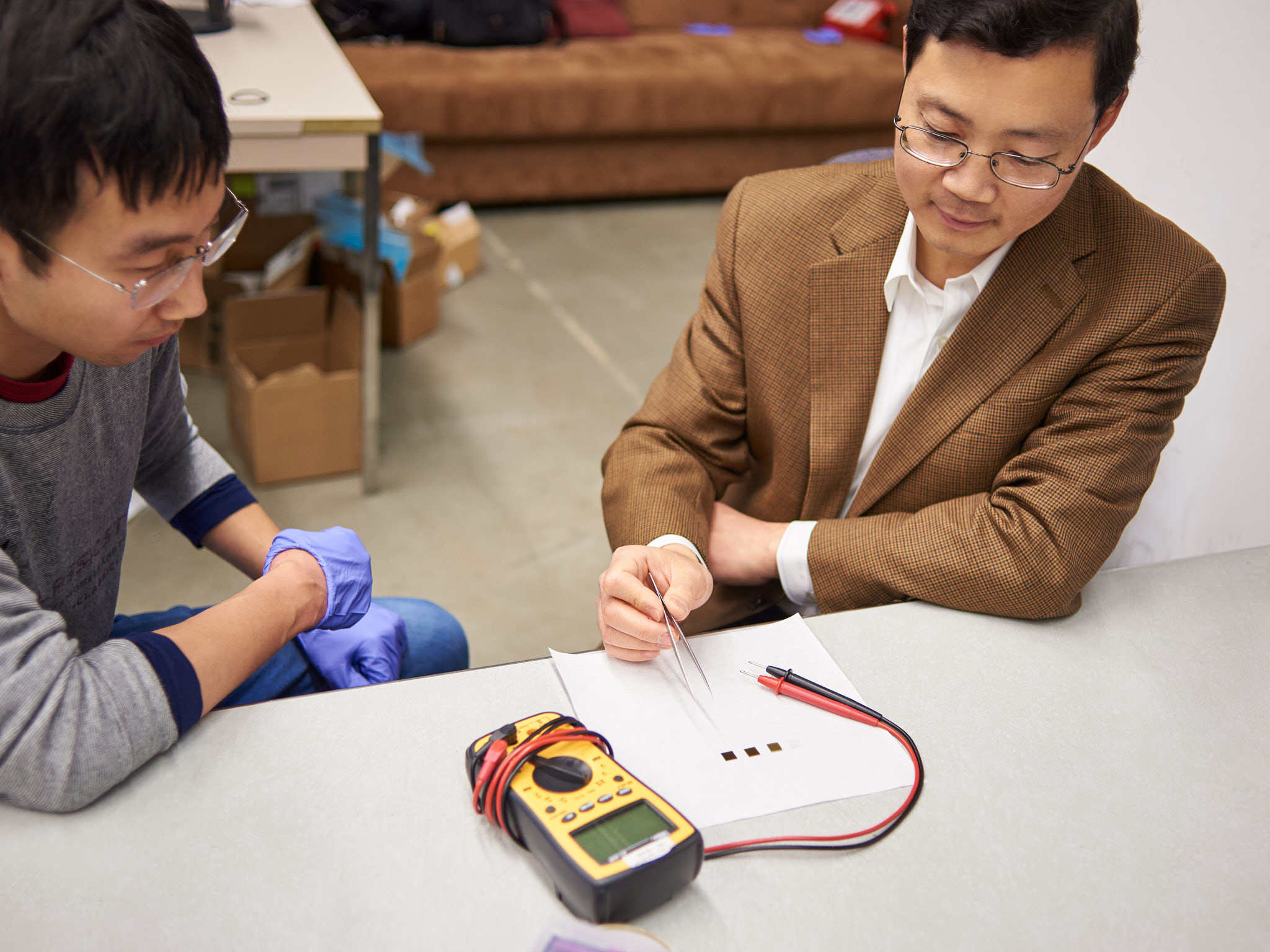Smart Materials: Getting the Sun to Pull Down the Shade
When a car seat heats up on a hot day, it just gets.... hot. But some materials become totally transformed by the sun’s heat. They undergo a kind of Jekyll and Hyde reversal called a phase change. They turn from insulators to metals.

In theory, a compound that makes this radical change could provide a novel form of air conditioning. Early in the day, windows coated with the material would be transparent to infrared light, which accounts for about half of the heat streaming in with the sunlight.
But if the room warms beyond the desired temperature, the alchemy would kick in. The magic material would switch to its metallic state and start blocking infrared light, preventing the room from heating up any more. In effect, the sun’s heat would turn on the air conditioning.
Junqiao Wu, professor of materials science and engineering is exploiting the most remarkable of these compounds, called vanadium dioxide, to devise ways to cool buildings, winter-proof car engines, and even create novel sunglasses.
Actually, many compounds go through a phase change, but for most of them, the temperature at which this occurs is very far away from room temperature often above about 210 or below about -180 degrees Fahrenheit.
Vanadium dioxide changes phase at 150 degrees Fahrenheit, but by adding discrete amounts of the element tungsten to the compound, Wu can get the material to change phase at room temperature.
“By adding tungsten, we can ‘tune’ vanadium dioxide to change phase at precise temperatures,” he says. “If it’s tuned to change at room temperature, it will be transparent to infrared light in the cool morning, but opaque -- blocking the infrared light -- when the day gets hotter.”
The key feature, he says, is that it’s “switchable.” Every day, at the pre-tuned temperature, the window would switch from transparent to opaque – automatically, with no mechanical or electrical input.
Wu estimates that if such coatings improved the efficiency of heating, air conditioning and combustion in engines by just five percent, the savings in energy costs in the U.S. would be in the billions per year.
He and his postdocs have demonstrated the strategy with miniature prototype models of houses, one “building” window coated with the tungsten vanadium oxide and one not.

With funding from the Bakar Fellows Program he plans to ramp up the proof-of-principle experiments.
“I hope with the Bakar Fellows Program’s support, we can demonstrate the technology’s promise, and its practicality,” he says. “We want to secure a patent for the process we are developing and publish good papers to share the technology with other researchers in universities and in industry.” Wu makes the tungsten-vanadium dioxide concoction in extremely thin films, about 100 nanometers thick, or about one hundredth the width of a human hair.
In addition to regulating incoming infrared light, tungsten-vanadium dioxide can also switch from insulating against heat in one phase to conducting heat more in the other. If a car engine were coated with it, Wu says, the material would protect the engine from overnight freezing temperatures, but then switch to its heat-conducting phase when the engine is started to help warm up the engine.
The material also has an electrical resistance that is extremely sensitive to temperature. A slight temperature rise can drive the materials from electrical insulating toward conductive. This property, Wu says, can be utilized to make sensitive infrared detectors, called ‘bolometers’, that, unlike conventional ones, do not need special cooling.
Also on the drawing board: switchable sunglasses with lenses that could instantly change from light to dark with the flip of a switch, depending on the light conditions. In many professions, such as construction work or trucking, the sun’s glare can pose sudden and serious trouble. An instant change of the lens’s transparency, instead of a gradual shift as glasses currently allow, could help on the job, and even save lives.
For more information, see http://bakarfellows.berkeley.edu
